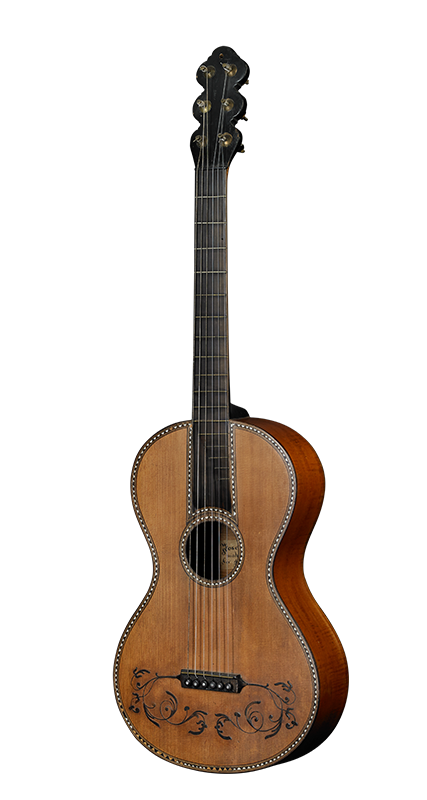
The four-course or “Renaissance” guitar appeared in Germany during the sixteenth century as elsewhere in Europe, but as is the case with all guitars from this period, no examples have survived. German guitars from the seventeenth century, however, are better represented, and no more so than in the few surviving guitars by native son, Joachim Tielke (1641–1719) of Hamburg. Tielke’s highly ornate five-course guitars capture the ornamental aesthetic of the late seventeenth century.
The Austro-German school of guitar making, perhaps better described as Viennese, did not become prominent until the nineteenth century when luthiers in Vienna modeled their guitars upon Italian instruments. They drew their inspiration from the masters of Tyrol situated along the transalpine route from Venice to Bolzano, to Augsburg and on to Vienna. Not content to merely imitate, however, they created a uniquely Viennese guitar.
Click on any of the guitars below to view details about the instrument and its history,
including biographical and performance videos.
Click on any of the guitars below to view details about the instrument and its history, including biographical and performance videos.